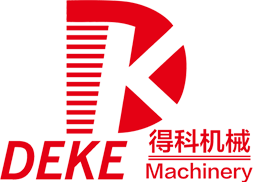Exploring the Advantages of Counter Rotating Twin Screw Extruders in Polymer Manufacturing
2025-05

Exploring the Advantages of Counter Rotating Twin Screw Extruders in Polymer Manufacturing
Table of Contents
- 1. Introduction: The Role of Extruders in Polymer Manufacturing
- 2. Understanding Twin Screw Extruders
- 3. Key Advantages of Counter Rotating Twin Screw Extruders
- 3.1 Efficiency and Performance
- 3.2 Superior Material Processing Capabilities
- 3.3 Enhanced Product Quality
- 4. Applications of Counter Rotating Twin Screw Extruders in the Polymer Industry
- 5. Technological Advancements in Twin Screw Extruders
- 6. The Future of Polymer Manufacturing with Counter Rotating Twin Screw Extruders
- 7. Conclusion
- 8. Frequently Asked Questions
1. Introduction: The Role of Extruders in Polymer Manufacturing
In the realm of polymer manufacturing, extruders play a critical role in shaping and processing materials into desired products. Among various types of extruders, **counter rotating twin screw extruders** stand out due to their unique operational principles and benefits. These machines have revolutionized the way polymers are processed, providing manufacturers with greater efficiency, versatility, and product quality. This article explores the advantages of counter rotating twin screw extruders, their applications, and the future they herald for the polymer manufacturing industry.
2. Understanding Twin Screw Extruders
Twin screw extruders, as the name suggests, utilize two intermeshing screws to transport and process materials. This design allows for effective mixing, kneading, and dispersion of polymers and additives, resulting in homogeneous products.
2.1 Types of Twin Screw Extruders
There are primarily two types of twin screw extruders: **co-rotating** and **counter rotating**. In **co-rotating extruders**, both screws rotate in the same direction, enhancing mixing capabilities. Conversely, in **counter rotating extruders**, the screws rotate in opposite directions, allowing for more precise control over material flow and processing.
2.2 Operational Principles of Counter Rotating Extruders
Counter rotating twin screw extruders operate on a unique mechanism where the screws engage in a coordinated motion that facilitates efficient material transport. The interaction between the screws creates a highly turbulent environment, promoting thorough mixing of materials. This design enables manufacturers to process a wider variety of polymers, including those with varying rheological properties.
3. Key Advantages of Counter Rotating Twin Screw Extruders
Counter rotating twin screw extruders offer numerous benefits that make them increasingly popular in polymer manufacturing.
3.1 Efficiency and Performance
One of the most significant advantages of counter rotating twin screw extruders is their operational efficiency. The design allows for higher throughput rates while maintaining consistent product quality. Manufacturers can achieve faster production cycles, reducing downtime and increasing overall productivity.
3.2 Superior Material Processing Capabilities
Counter rotating twin screw extruders excel in processing various materials, including **thermoplastics**, **thermosetting polymers**, and **composites**. Their ability to handle different feed materials and additives makes them versatile machines, suitable for producing a wide range of products, from films to fibers and beyond.
3.3 Enhanced Product Quality
The precise control over material flow and mixing in counter rotating twin screw extruders results in enhanced product quality. The homogeneous distribution of additives and fillers leads to improved mechanical properties and performance characteristics in the final products. As a result, manufacturers can meet stringent quality standards and customer expectations.
4. Applications of Counter Rotating Twin Screw Extruders in the Polymer Industry
Counter rotating twin screw extruders find applications across various sectors in the polymer industry, demonstrating their versatility and effectiveness.
4.1 Adhesives and Coatings
In the production of adhesives and coatings, the ability to mix different components uniformly is crucial. Counter rotating twin screw extruders facilitate the blending of polymers with additives, ensuring consistent performance in adhesive applications.
4.2 Compounding and Blending
Compounding involves the incorporation of additives into base polymers. Counter rotating twin screw extruders are ideal for this process, as their design allows for high shear forces, resulting in efficient blending and dispersion of materials.
4.3 Thermoplastics Processing
The processing of thermoplastics benefits significantly from the use of counter rotating twin screw extruders. Their ability to handle varying viscosities and blend different types of thermoplastics ensures that manufacturers can create high-quality products tailored to specific applications.
5. Technological Advancements in Twin Screw Extruders
The evolution of technology has brought about significant advancements in the design and functionality of twin screw extruders.
5.1 Automation and Control Systems
Modern counter rotating twin screw extruders are equipped with advanced automation and control systems that enhance operational efficiency. These systems enable real-time monitoring and adjustments, ensuring optimal processing conditions and reducing variability in production.
5.2 Sustainability Initiatives in Extrusion Technology
As the industry moves towards sustainable practices, counter rotating twin screw extruders are adapting to meet these demands. Innovations in material recycling and energy-efficient designs are becoming increasingly prevalent, allowing manufacturers to reduce their environmental impact.
6. The Future of Polymer Manufacturing with Counter Rotating Twin Screw Extruders
Looking ahead, counter rotating twin screw extruders will continue to play a pivotal role in the advancement of polymer manufacturing. Their ability to adapt to new materials and processes positions them as essential tools for manufacturers seeking to innovate and maintain competitive advantages in the market.
7. Conclusion
Counter rotating twin screw extruders represent a significant advancement in polymer manufacturing technology. Their unique design and operational capabilities enable manufacturers to achieve higher efficiency, superior material processing, and enhanced product quality. As the industry evolves, the importance of these extruders will only grow, making them indispensable assets for manufacturers aiming to meet the challenges of tomorrow.
8. Frequently Asked Questions
1. What industries benefit from counter rotating twin screw extruders?
Counter rotating twin screw extruders are used across various industries, including automotive, packaging, and consumer goods, due to their versatility in processing different polymers.
2. How do counter rotating twin screw extruders compare to co-rotating models?
Counter rotating twin screw extruders offer better control over material flow and mixing, making them suitable for specific applications where precision is vital.
3. Are counter rotating twin screw extruders energy-efficient?
Yes, modern counter rotating twin screw extruders are designed to operate efficiently, often incorporating energy-saving technologies that minimize waste.
4. Can counter rotating twin screw extruders handle high-viscosity materials?
Absolutely! Their design allows for efficient processing of high-viscosity materials, contributing to their wide-ranging applications.
5. What advancements are being made in twin screw extruder technology?
Technological advancements include improved automation, enhanced control systems, and innovations focused on sustainability and material recycling, making extruders more efficient and environmentally friendly.
Previous Page:
RELATED INFORMATION
Understanding the Benefits and Applications of Parallel Twin Screw Extruders
In the realm of plastic processing machinery, the parallel twin screw extruder stands out as a versatile and effective solution for a variety of applications. This type of extruder is characterized by two screws that run parallel to each other, allowing for efficient melting, mixing, and compounding of materials. The design of the parallel twin screw extruder enables a uniform and consistent outpu
Innovative Applications of Parallel Twin Screw Extruder Technology in Modern Manufacturing
Innovative Applications of Parallel Twin Screw Extruder Technology Introduction to Parallel Twin Screw Extruders The **parallel twin screw extruder** has emerged as a pivotal technology in the realm of manufacturing, particularly within the plastic processing sector. Characterized by two intermeshing screws rotating in the same direction, these extruders are designed to efficiently mix, melt, and



